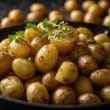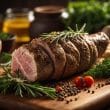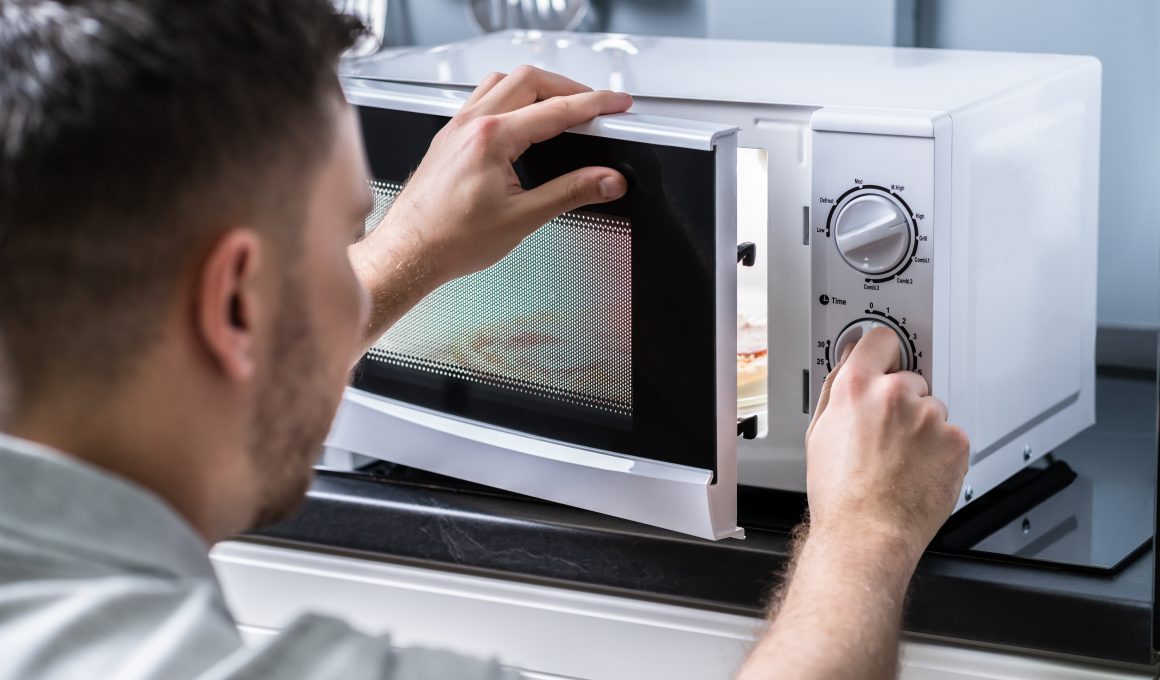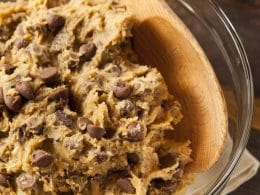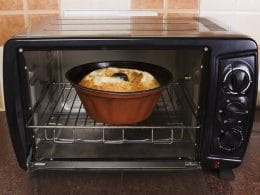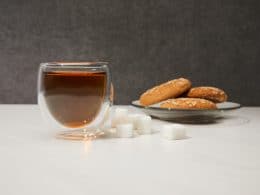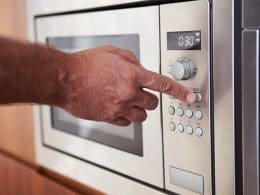The current pandemic, which is thankfully waning gradually, has made take-out delivery and home meal options quite popular than has been the case. With the need for social distancing and all of that, take out and delivery options of food have been adopted basically as a means to shorten the length of time we mingle with one another and cluster together. Consequently, it becomes imperative to select the most disposable containers for go-to meals in either preparations of the food, storage, delivery or re-heating in the microwave or even oven. It thus become necessary to ask how safe these plastic containers are, since it’s possible that they may contaminate food.
The best and safest plastics to use in a microwave/oven
In a hurry? Let me quickly share with you the best and safest plastics you can use to heat your food in the microwave/oven right away: (more details after the table)
[table “15” not found /]Can I still eat food in plastic that has melted in the oven?
These containers are produced with different chemical substances that have different properties and as such, in order to answer the question must satisfactorily, we must put into consideration all these properties and see the roles they platly in our safety or otherwise.
Common materials used in producing these emergency containers are: CPET( crystallized polyethylene terephthalate), PVC, LDPE, PVDC, paperboard or even aluminum. Though CPET has been produced to increase tolerance to heat, it is still susceptible to melting in excessive conditions. Plastic when ingested can be very harmful indeed, especially where it has melted into the food and the reason for this is the fact that it is made of very strong chemical substances with serious health implications. For this reason, you are not advised to eat any food cooked in plastic that has melted in the oven.
However, there are varying opinions on this contention in some cases. For example, some experts posit that you can indeed eat food from plastic containers that have melted in the oven depending on the quantity of the melted plastic and its type. However, you should ensure that the oven is thoroughly cleaned afterwards, but candidly, it is best if you don’t.
How dangerous are melted plastic fumes or smell?
Whenever plastic burns and melts, it produces chemical substances such as dioxin and furan which can have serious implications in our health even when inhaled in small quantities. For instance, the inhalation of any or both of these substances can cause coughing, shortness of breath or dizziness and eventually death in severe circumstances. Prolonged exposure to these substances may lead to cancer of certain body tissues also. So, basically, we must recognize that melted plastic fumes are indeed very dangerous to our health.
Is it harmful to eat food cooked in an oven where a piece of rubber plastic has melted in the bottom of it?
It may not necessarily be harmful for certain reasons. For example, if the plastic has melted only at the bottom of the oven and not actually near the shelves where you stack food, it may not really be harmful. However, if the melted plastic has come in contact with or contaminated the food especially in large quantities, then it may be harmful to eat the food. It is something that warrants serious care because eating plastic is bad regardless of whether it is melted or not.
For instance, such ingested plastic can get caught up in your intestinal lumen with disastrous consequences. Particularly, avoid sulfates, parabens and many other plastic components that can cause damage to the skin or even cancer. Also, some plastic materials can interfere with the body’s utilization of fat soluble vitamins thereby causing vitamin deficiency diseases. However, there are still plastic parts that can pass through the intestine intact without causing any harm.
Is it safe to use an oven with melted plastic residue left on it?
Whether it is safe or not will depend on a lot of things. For example, the plastic may be melted at the bottom of the oven and not anywhere near where you stack your food, in whose case the chances of contamination are minimal. Secondly, it depends on the kind of plastic too, since some melted plastic are more injurious to our health than others.
Finally, there is the issue of the quantity of the melted plastic left in the oven. Some quantities may be quite harmless, but in excess can cause severe threat to health. To be on the safe side, remove any left over plastic in your oven by peeling or scraping before use. Using solvent wettened rags can also be applied to scrub ovens in which some plastic has melted before you incinerate any more remnant.
Melted plastic while cooking, can I still eat the food?
It is generally agreed that you must not eat any plastic in your food due to the untold harm they are capable of causing you sometimes. However, there are experts on the matter, who suggest that you can eat such food provided the plastic variety involved is not that which is judged to be very injurious.
Similarly, since we know that plastic can be less harmful if you do not ingest them in large quantities, we should, as much as possible, avoid eating any food with much plastic contamination in it.
What happens if you eat melted plastic?
Sometimes, plastic when eaten can cause severe skin diseases and in extreme circumstances even cancer. There is also the possibility of large plastic in the intestine to cause the occlusion of its lumen which may lead to a surgical emergency in order to relieve the obstruction.
In addition, vitamin deficiency dieases are also common since ingested plastics are capable of interfering with the absorption of fat soluble vitamins such as vitamins A, D, E and K. Hormonal issues are also common when plastic substances are mistakenly eaten as they are known to interfere with the activities of certain hormones as well.
Is my food still safe if the plastic used in cooking, melts in the oven?
Well, it may be, though that depends on where the plastic actually melts. This implies that, should the plastic melt at the bottom of the oven and not really near the shelf where you stack food, it may not be necessarily contaminated, and is thus safe for consumption. However, if the melting happens in close proximity to where the food is stacked, then great care has to be taken in such instances.
Similarly, the type and quantity of the melted plastic also count for something since there are injurious amounts and more toxic plastic varieties too. So, basically, take all these factors into consideration before judging whether your food is safe or not. But to be on the safe side, consider any food prepared in ovens that contain melted plastic to be unsafe for human consumption.
The easiest way on how to remove melted plastic from an oven?
Judging by how often we use the plastic containers in our ovens, the chances are pretty high that we may at one time or the other need to clean melted rubber from them. This makes knowing how to get rid of them an invaluable necessity. To rid your oven of any melted rubber, you are basically left with two options: the cold or the warm procedure. To remove plastic out of either an electric or gas oven, you are advised to use the cold method. This method will freeze the plastic and make it easier to break out with a knife or any scraping tool.
In this method, you should first put an ice bag on top of the plastic and allow it to sit there until the ice is fully melted. This will essentially harden the plastic residue enough to effect its easy removal with a knife or any scraping tool. Afterwards, clean the oven with a detergent and that’s it. In the case of self cleaning ovens, the warm method is preferable. This method entails using the heat from the oven to melt the plastic.
However, you are required to open all your windows and turn on the fans before you initiate this procedure. Next, turn on the oven to its lowest on the setting and allow the plastic to melt a bit. After that, use a wooden spoon to scrape off any melted plastic out of the oven. Finally, when all the plastic is removed, run the self cleaning cycle in order to get rid of any leftover plastic.
Is melted plastic in an oven toxic?
It can be, but that depends on many factors too. First, how much rubber is melted in the oven and what type of plastic is it? Some plastics are more injurious than others. Plastic become more toxic in the oven if you have it in much quantity than when you have only a little of it in the oven. Should the melted plastic be very close to your food or in contact with it, it stands a better chance of being much more toxic than otherwise.
So, yes, melted plastic in your oven can be quite toxic indeed, but that relies heavily on these factors. They become more so when you melt them which causes the release of certain injurious fumes that may gravely affect your health.
Safe utensils to use in an oven
Though some of these utensils may not really be 100 percent safe, but they are the most reliable around for use in the oven. This they can easily do because they are highly resistant to denaturation or damage by intense heat and also do not tamper with your food or other condiments. Most notable among them is glass.
a. Glass dishes and pots are non reactive and hence, will not leach water or chemicals into your food.
b. Stoneware. Though stoneware is oven safe, but they are both expensive and are not recommended for washing with soap, a situation that turns many people off. They are also known to break quite easily.
c. Ceramic or enameled cast iron. Cast iron is renowned as a great stovetop material as well as a good conductor of heat too. Furthermore, acidic foods are not known to react with cast iron, but be sure that they are lead free.
d. Stainless steel. It is also non reactive especially if it involves non acidic food items.
e. Silicone baking mats. Though relatively new for oven uses, it is still known as both inert and non reactive.
What utensils should I avoid for use in the oven?
Most notable substance here is aluminum since it has been linked to Alzheimer’s disease, despite this fact however, many people find it useful as pots, muffin tins and cookie sheets. Whatever the case, do not use acidic food in them, as it may leach chemicals faster. Another substance that is not recommended for use in oven is nonstick surfaces such as PFOA, a very nasty chemical that is used in Teflon and many other black nonstick surfaces or off glasses at high temperatures. Furthermore, it is known to kill birds too.
Conclusion
The need for take away food containers has not been as popular as it is now with the current pandemic still raging at the moment in many climes. Plastic utensils are popular in this regard, though they are known to have a lot of effects especially when they get melted or burnt in the ovens. Every effort must be made to ensure that they do not contaminate our foods and where that unavoidably happens, you have been informed on what measures to take, which includes how to rid your microwave or ovens of melted plastics.
In cases where you mistakenly consume any plastic contaminated foods, you have equally been guided on what measures to take too. The selection of the best materials to use in ovens has also been accorded every necessary attention and all the considerations for such choices explained. If your oven happens to have any melted plastic in them while cooking or baking, you must ensure that this contaminant is promptly removed before any further use. How you go about this removal was also explained in great detail. It is believed that this wealth of information will stand you in good stead whenever necessary.


